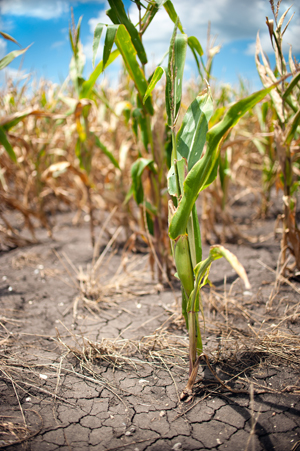There are countless variables growers are forced to consider as they prepare for the upcoming growing season, and almost as many solutions available to counter the effects of these variances. Unfortunately, the list of strategies that prove effective across extremes is a short one, often leaving growers to manage reactively to the unpredictable.
Of course, there are notable exceptions — the type of crop management decisions that allow producers to make the most out of whatever situation manifests itself between planting and harvest. Such is the case with aggressive management of potassium levels in soil.
This year, as farmers in various parts of the country wonder if the drought of 2012 will turn into the drought of 2013, taking steps to ensure adequate potassium levels can turn a poor year good, or a good year great.
Potassium and plant growth
Potassium is a vital nutrient for optimal plant growth, second to nitrogen in terms of quantity a corn plant needs, and performing a number of functions that ensure healthy, stress-resistant plants.
By helping to create concentration gradients inside the plant, potassium supports water uptake into the plant, which is essential when water resources are not readily available. Potassium also regulates the plant’s leaf tissue openings to keep moisture in the plant rather than distributing it through the leaves, which contributes to better stalk strength and standability.
Potassium also activates enzymes required for growth, which helps prevent disease and control insects.

The uptake of potassium into the plant is dominated by diffusion — moving from high concentrations in the soil to a lower concentration in the root. This leaves the uptake process highly dependent on the stages of root development. Smaller or compromised root systems significantly limit the ability of plants to access potassium, ultimately limiting plants’ growth potential.
All this happens in a relatively short period of time. The majority of potassium uptake (as much as 80 percent) happens prior to corn tasseling, with the greatest uptake happening between leaf stages six and 10. At the same time, potassium is stimulating earlier and deeper root growth, to ensure season-long nutrient uptake.
Potassium’s importance in 2013
Potassium soil fertility levels are below optimum and, according to the most recent International Plant Nutrition Institute (IPNI) study, need improvement. The 2010 national soil fertility study showed an average decline of 4 ppm since 2005, and approximately 34 percent of samples contained less than the agronomic optimum amount of 120 ppm.
For areas particularly affected by last year’s drought, nutrient removal may have been greater than normal if crops were harvested for hay or silage as opposed to a normal grain crop harvest. With many of these same areas still in need of moisture, high soil tests and deep placement are even more important to ensure adequate, season-long supplies of nutrients.
Additionally, potassium is one of the major keys to improving the utilization of nitrogen. When potassium levels are maintained at optimum agronomic levels, plants utilize nitrogen more efficiently and effectively, and more of the applied nitrogen is recovered in the aboveground biomass.
In a year when many corn growers are hoping for a yield rebound, experts stress the need to know your soil is as important as ever, whether it be in preparing for the worst or hoping for the bin-busting best.
A win-win situation
In 1999, south-central Ohio suffered severe drought, with many corn yields ranging form 40 to 70 bushels per acre. But farmers with high soil test levels of potassium were able to produce more than 150 bushels per acre in the same area.
More than 10 years later, growers in some dry areas saw the relief that solid potassium levels can offer as well. Field agronomists and crop advisors noted this past summer that crops grown on soils with marginal potassium levels succumbed to drought more quickly than in more fertile areas of the same field.
From those situations comes an important lesson: Look closely at areas where plants wilted sooner than expected last season, as they might be areas of potassium deficiency.
Drought will have less of an impact on yield where nitrogen, phosphorus and potassium availability are high throughout the season. In fact, yield increases in response to added fertilizer may be higher in a dry year than a normal one. As an added benefit, plant development and maturity are accelerated by high fertility levels, meaning the crop might get through critical flowering stages earlier, perhaps before drought stress occurs.
While expectations of dry conditions can serve as an impetus for looking more closely at soil fertility, it’s certainly not the only time a balanced, aggressive nutrition plan makes sense. In fact, it’s a proposition that will protect a crop during adverse conditions, but also will push yields in fields experiencing ideal conditions.
When it comes to crop nutrition, the best strategy to prepare for a drought year is to build the foundation for a great year. By boosting potassium levels in fields now, growers can raise crops more tolerant to nightmare scenarios. Better yet, they might just enjoy a dream season.